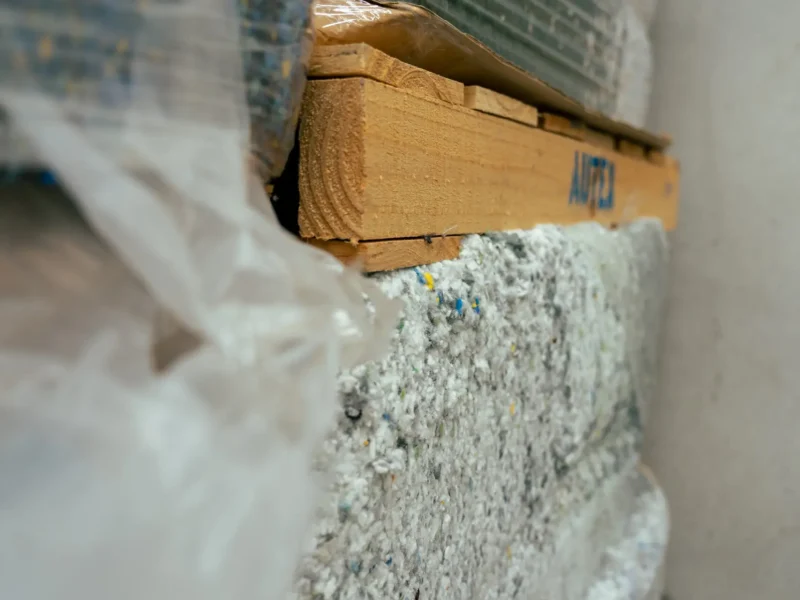The construction and demolition sector is responsible for an estimated 40–50% of New Zealand’s landfill waste—a striking indication that the materials we choose and how we manage them during building projects need urgent rethinking.
“This issue is widely known and one we take very seriously,” says Sam Wells, Product Development Lead.
“There is an ever-growing number within our industry who are seeking innovative solutions that will help reduce waste and find alternative uses for materials. This is being led by architects, designers, builders, and manufacturers who are prioritising conscious materials and their end-of-life treatment when used in their projects.”

For most of us, visiting a landfill is a rare experience—even for those who manage waste every day. Typically, rubbish is tossed into a skip, collected by a truck, and quickly forgotten once it leaves the site. Because we aren’t confronted with the long-term reality of our waste, it’s easy to overlook the fact that it doesn’t simply vanish. Instead, it’s added to growing piles that are eventually covered with dirt, as new holes are carved out to accommodate even more waste. Landfills not only destroy natural habitats but also release harmful pollutants into the air, soil, and groundwater.
By diverting and reducing waste before it reaches landfill, we can limit the need for new landfill sites. This leads to fewer polluted landscapes, safer environments for native species, reduced carbon emissions, and a decrease in the production of single-use and hazardous materials.
Although managing waste on construction sites is important, the most effective strategy for reducing waste begins with specifying products that are intentionally designed to minimise it.
“In our industry, architects generally control what materials and products are used in their projects,” Wells explains. “These products are increasingly being selected based on the origin, its usable lifespan, and what end-of-life options are available.”
For architects to design with sustainable materials, manufacturers must take responsibility by creating and providing easy access to environmentally conscious products.
“At Autex Future Lab, sustainable design is at the heart of our operations. We continuously strive to develop solutions and systems that reduce waste and promote a circular economy,” Wells says.
“Our initiatives are diverse and impactful. We have helped Autex Acoustics reach a point where all of their acoustic solutions are made with at least 60% recycled PET. They proudly offer a takeback programme, exemplified by their ReForm™ product. We’ve also pioneered pelletiser technology to transform acoustic panel offcuts into PET pellets, which we call RePET. This material is then used to create Autex Acoustics accessories for our products, such as the Frontier Acoustic Raft end caps and the SpinFix glueless mounting system.”
Of course, the construction waste problem can not be fixed by one supplier, manufacturer, or architect. To achieve real change and see significant results, the industry must work together as a cohesive unit.
“Collaboration throughout the whole building process is essential. Whether you’re an architect, interior designer, installer, builder, or manufacturer, prioritising sustainable practices is key to affecting change. By choosing sustainable materials, investing in new technologies, and providing transparency in our systems, we can collectively drive the industry toward greater sustainability. This kind of collaboration has already enabled us to develop our new pelletising technology and implement a Takeback Programme in New Zealand. The challenge presents a great opportunity for collaboration; by joining forces, we can make a real and lasting impact.”

